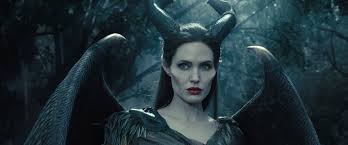“Maleficent” makes a good guy out of the Mistress of all Evil

June 1, 2014
Most people know Maleficent to be an ugly, green, evil fairy that places a curse on an innocent child for not being invited to a party. However, this new movie will make viewers rethink everything they’ve ever known about this classic villain.
“Maleficent” is the story of a beautiful fairy, Maleficent (Angelina Jolie), who falls in love with a human (Sharlto Copley) who betrays her and steals her wings to become king in a time when there is a war between the humans and fairies. Distraught at the loss of her wings and dead set on revenge, Maleficent casts and evil spell on the new King Stefan’s daughter, Aurora (Elle Fanning) that will cause her to fall into a deep sleep that can only be broken by true love’s kiss.
Maleficent is surprised, however, to find that a relationship develops between her and the girl when she is removed from the castle for her own protection. She attempts to lift the curse, only to find that this is impossible and she is set to destroy the only person she loves in the world. When Aurora falls to the curse, true love is revealed to act in unexpected ways, allowing Maleficent herself to wake her up with her true maternal love. In a final battle to escape the castle and a mad king bent on revenge, the king dies, allowing Aurora to be named queen of both the fairy kingdom and the human kingdom.
The story itself falls flat the way it is portrayed to the audience. The backstory to Maleficent’s evil might’ve been worth telling, but she was only evil for about one scene before she started to turn back into a good guy. A character can be evil and still be fascinating, which was forgotten by Disney in this movie.
The thematic elements were also weak. The ending makes the point that love at first sight isn’t real and that familial love can also be true love. These would be good points, except the way they are portrayed is almost exactly the same as in the ending of Disney’s “Frozen,” except “Frozen” did it much better than “Maleficent,” leaving a bad impression of trying too hard but not quite making it.
There were some saving graces to the film. Jolie was absolutely magnificent and fully embodied her character. She gave a flat film life and took her character’s poor plot and made it something. The audience felt her pain at the loss of her wings, cried with her at Aurora’s pseudo-death, and felt her joy in the clouds.
Fanning and Sam Riley, who played the human form of Maleficent’s pet raven, didn’t shine as brightly as Jolie but were able to play off of her and by doing so give depth to their characters. Brenton Thwaites, who played Prince Phillip, was not a prominent role in the film but his character was intriguing for the few moments we saw him and he had excellent chemistry with Fanning.
The animation was also very strong, to be expected from director Robert Stromberg, who has won two Oscars as an art director. The various types of fairies were given distinct looks and the setting was mystical and lovely, all of which enhanced the film in places where it desperately needed it.





